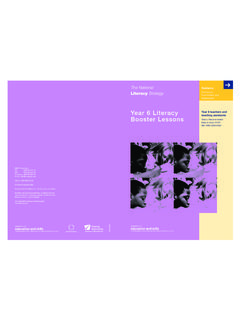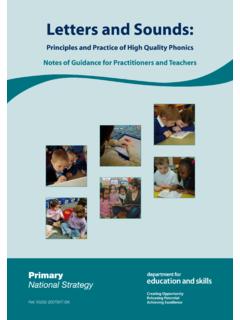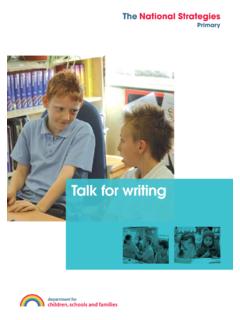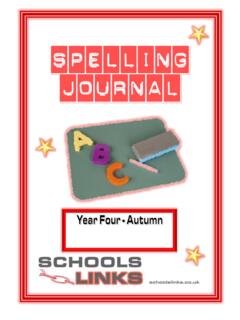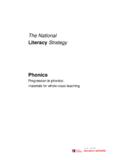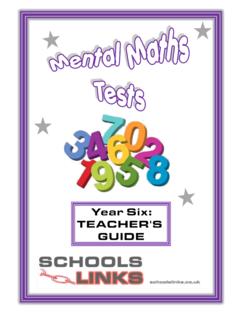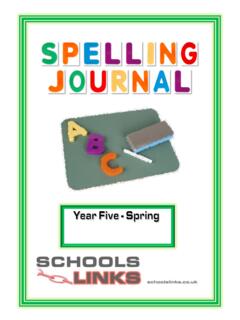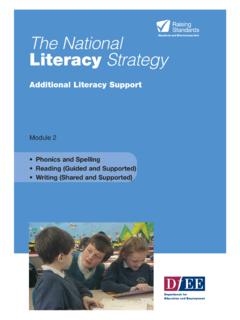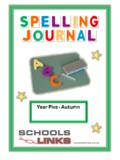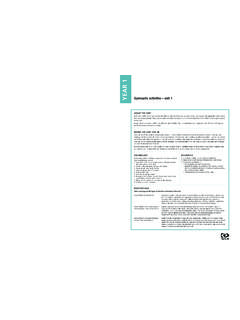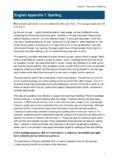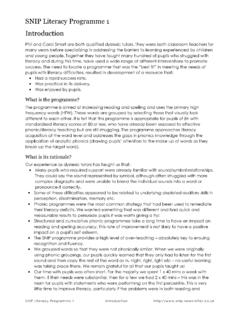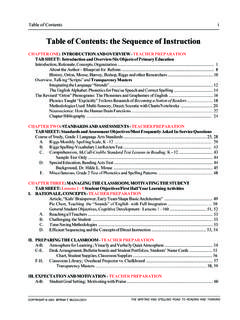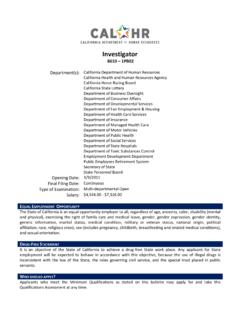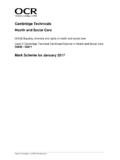Transcription of The National - schoolslinks.co.uk
1 The National Literacy Strategy spelling bank Lists of words and activities for the KS2 spelling objectives Contents Page Introduction 3. Year 3 Term 1 objectives 4. Year 3 Term 2 objectives 8. Year 3 Term 3 objectives 16. Year 4 Term 1 objectives 21. Year 4 Term 2 objectives 28. Year 4 Term 3 objectives 31. Year 5 Term 1 objectives 40. Year 5 Term 2 objectives 45. Year 5 Term 3 objectives 52. Year 6 Term 1 objectives 58. Appendix 1 spelling around the clock 60. Appendix 2 Teaching spelling conventions 61. Appendix 3 Examples of investigations 62.
2 Appendix 4 Differentiation issues 70. Appendix 5 Whole-class consolidation activities 71. Appendix 6 spelling journals 76. Department for Education and Employment Sanctuary Buildings Great Smith Street London SW1P 3BT. Crown copyright 1999. Extracts from this document may be reproduced for non-commercial educational or training purposes on condition that the source is acknowledged. 2 ISBN 0 19 312240 5. National LITERACY STRATEGY. Introduction This booklet contains lists of words and ideas to help in the teaching of the Key Stage 2 spelling objectives set out in the National Literacy Strategy Framework for Teaching.
3 They are drawn from the Word Level strand, predominantly from the section entitled spelling Rules and Conventions', but with a few from the Vocabulary Extension' objectives. A page is devoted to each individual objective, although there are obvious links between objectives, particularly those covering prefixes, suffixes, roots and modified endings. To ensure a smooth incline in learning, you will find it useful to look at examples from previous and later year groups to see how these strands develop. The word lists are not exhaustive; they have been selected as the most common and appropriate words for the age group, and the most useful for teaching.
4 Families of words have been represented by a single word rather than listing every variation. Some objectives are revisited or, more accurately, approached from different angles. For example, the choices involved in putting s onto the end of a word are tackled as part of pluralisation, tense and the use of suffixes. This is a deliberate attempt to anchor key rules securely. For each objective you will find not only a bank of useful words, but suggestions for teaching the objective in whole-class and group time. At the bottom of each page you will usually find notes which include the rules or conventions themselves.
5 For more specific ideas and lesson materials, look in the orange National Literacy Strategy booklet for Module 2 Word Level Work: Activity Resource Sheets'. For information, call 01536 741171 or visit our web site at This booklet is issued as an extra support to the National Literacy Strategy training materials for 1999 2000, which include a hour session on spelling for each year of Key Stage 2. Contact your Local Education Authority's Literacy Consultant/s for further details. Extracts from the training which may prove useful have been provided in the Appendices.
6 3. National LITERACY STRATEGY. Year 3 objectives Year 3 Whole-class approaches Collect up a list of ing words and their base words to compare. Investigate Term 1 the effect of adding ing to the words in the ending in e' and short vowels'. lists. Provide some base words and ask children to add ing on individual Objective 8. whiteboards to show you. How the spellings of verbs alter when ing is Group task added Card-sorting activities. Extension activity (very challenging). Add ing to words ending in c (add in a k).
7 Vowel + y (just add);. l (double the l). Typical words Words ending in e Words with short vowels help helping hope hoping hop hopping ask asking take taking run running see seeing write writing shut shutting do doing drive driving chat chatting spend spending decide deciding clap clapping go going make making shop shopping enjoy enjoying care caring plan planning lead leading stare staring rub rubbing pull pulling hate hating slip slipping look looking like liking fit fitting jump jumping smile smiling tip tipping meet meeting come coming bet betting
8 Say saying ride riding win winning try trying amaze amazing sit sitting walk walking raise raising slim slimming Notes Most words just add ing. Words ending in e drop the e to add ing. Words with a short vowel before the final letter double the final letter. 4. spelling BANK. Year 3 Whole-class approaches Collect a list of le words over time, from shared text or by brainstorming. Term 1 Investigate the list for familiar patterns, particularly for the letters that tend to precede the le. Experiment in adding suffixes such as ly, ing, and draw attention to the Objective 9.
9 Dropping of the e. To investigate and learn to use the spelling Group tasks Sort the list of words into family groups, those preceded by double pattern le as in little, letters, those preceded by ck, etc. muddle, bottle, scramble, Word-hunt for more examples. cradle Word-hunt for el and al words. ckle able Double letter + le cle dle chuckle able middle ripple uncle candle prickle table giggle nettle article handle tickle vegetable guzzle bottle cycle needle cackle fable toggle muddle icicle noodle trickle cable kettle hobble obstacle poodle pickle reliable cattle puddle miracle bundle probable stubble cuddle circle little wriggle particle bubble rubble cubicle apple nozzle bicycle ripple sizzle saddle wobble paddle fiddle ble ible ple double sensible example trouble responsible dimple bible possible
10 Simple fable horrible crumple humble terrible ample tumble sample grumble rumble Notes le is much more common than el or al. It is easy to distinguish between cel and cle because the c is always soft in the former and hard in the latter. (Compare parcel and particle). The vast majority of le endings are preceded by letters which feature an ascender or descender. al words include pedal, metal, cannibal, medal, petal, and the al suffix appears in words like medical and magical. el was originally a suffix meaning small.
